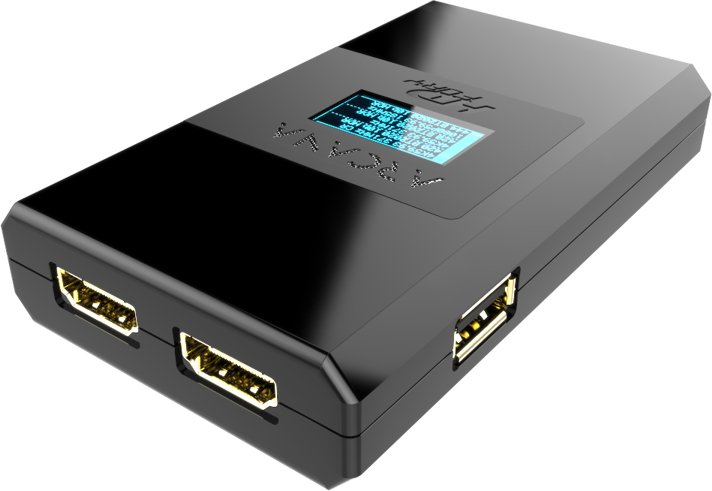The “e” in eARC stands for enhanced Audio Return Channel,
And is a new standard feature of HDMI 2.1 that aims to provide the best possible audio resolution from your TV. The new configuration requires eARC support from both your TV and your audio device, which means both devices must support HDMI 2.1 — older HDMI versions do not support eARC. You’ll also need an HDMI cable with support for Ethernet, like the newer Ultra High-Speed HDMI cables, which do include Ethernet support.
With eARC, full-resolution sound signals — including 3D surround sound formats like Dolby Atmos and DTS:X — can be passed back and forth from your TV and audio systems. That’s true whether they come from over-the-air broadcasts, internal streaming apps, or Blu-ray players or game consoles connected directly to your eARC-enabled TV.
Previously, decoding high-bitrate audio
like Dolby Atmos often required plugging your source device directly into a compatible audio/video receiver, soundbar, or powered speakers, as most TVs are limited to outputting compressed surround sound or even stereo audio. With eARC, you can plug your HDMI devices directly into your TV and the TV will then send the uncompressed, high-quality audio to a soundbar, receiver, or amplifier directly from the eARC port.
What’s more, since the HDMI 2.1 spec offers faster data transfer with more bandwidth, both the audio and video signals can be synchronized automatically. Ever had trouble with lip-sync problems? Those are issues of the past with eARC.
In theory, this new protocol also means manufacturers could create a new wave of audio-only receivers, soundbars, and amplifiers, as your TV would be able to handle the video signal, while still allowing for the highest-quality audio to make its way to your sound system. This could significantly reduce the cost of all kinds of home theater components.

It will be a while until eARC is everywhere,
but when it is, we’ll enjoy a new level of simplicity and flexibility. So far, companies that have made their eARC plans public include Samsung and Sony, talking about their TVs, as well as Pioneer, Denon, Onkyo, Marantz, Yamaha, and Sennheiser, regarding their A/V accessories. We saw tons of new products at CES 2020 toting the goods, including most of the soundbars on our list of the show’s best.
With that in mind, we must point out that new technology takes time to become widely available. Don’t hold off on buying that new receiver or 4K HDR TV you’ve had your eye on. HDMI 2.1 is a very forward-looking, future-proofed technology, but it is still in its infancy, and while very small corners of the world have begun enjoying 8K content, most of us are still waiting for the full incorporation of 4K content into our setups. Finding all the pieces you need right now is only a bit better than seeking a needle in a haystack, especially if you don’t have much of a budget to work with.
In other words, this is a gradual evolution and not one that should keep you from enjoying the still-burgeoning world of 4K TVs and Dolby Atmos/DTS: X-enabled audio devices. Like all technologies, the future of home theater is announced and planned long before it becomes the standard. Yes, it is impossible to stay on top of the very latest and greatest from home theater land — and unless you’re in the top 1%, that’s OK.